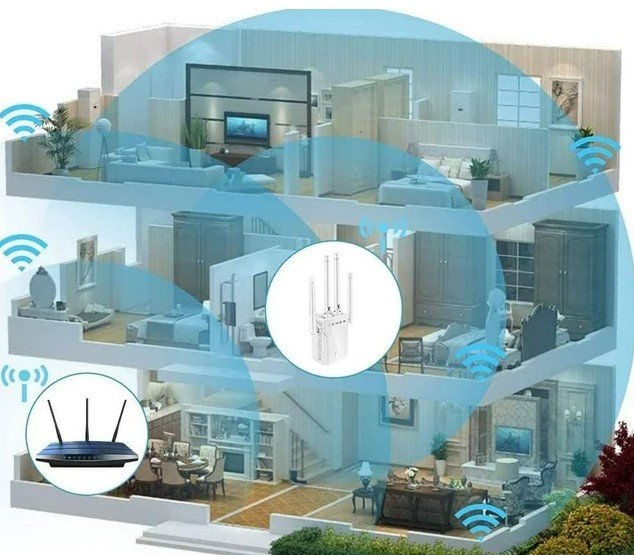
Are you tired of dealing with weak WiFi signals in certain areas of your home? If so, you’re not alone. Many people struggle to get a strong and reliable internet connection throughout their house. Fortunately, there is a solution: WiFi extenders. Moreover, this article will guide you in finding the best WiFi extender for improved signal strength and seamless connectivity at home.
A good WiFi extender can help eliminate dead zones and increase your wireless network’s coverage. For instance, it can greatly improve connectivity in your basement, backyard, or upstairs bedrooms. Additionally, these devices extend your WiFi network, providing a reliable connection in areas with weak or no signal.
When choosing a WiFi extender, consider compatibility, range, speed, and ease of installation. Our curated list of top extenders will help you find the best one for your needs.
Say goodbye to weak signals and hello to fast, stable internet connection. Let’s boost your internet signal with the best WiFi extender for your home.
Top WiFi extender brands in the market
TP-Link – RE605X, Best overall wifi extender, $100 at Best Buy for more details click here
Linksys WiFi Extender, perfect 2nd choice for wifi extender, $130 from Best Buy, for more details click here
TP-Link AC750 WiFi Range Extender, Best budget wifi extender, $30 from Best Buy, for more details click here
NETGEAR Wi-Fi Range Extender EX6120, highly rated and budget friendly wifi extender, $30 from Amazon, for more details click here
ASUS RP-AX58 AX3000 Wi-Fi 6 Range Extender, Best performance wifi extender, $80 from Best Buy, for more details click here
Best Wi-Fi range extender
TP-Link RE605X WiFi Extender
The TP-Link RE605X uses Wi-Fi 6 technology to boost coverage, thereby delivering faster speeds and better connections throughout your home. Additionally, it’s easy to set up, works with any router, and features a signal light for finding the best spot. Furthermore, it includes a wired Ethernet port for direct connections.
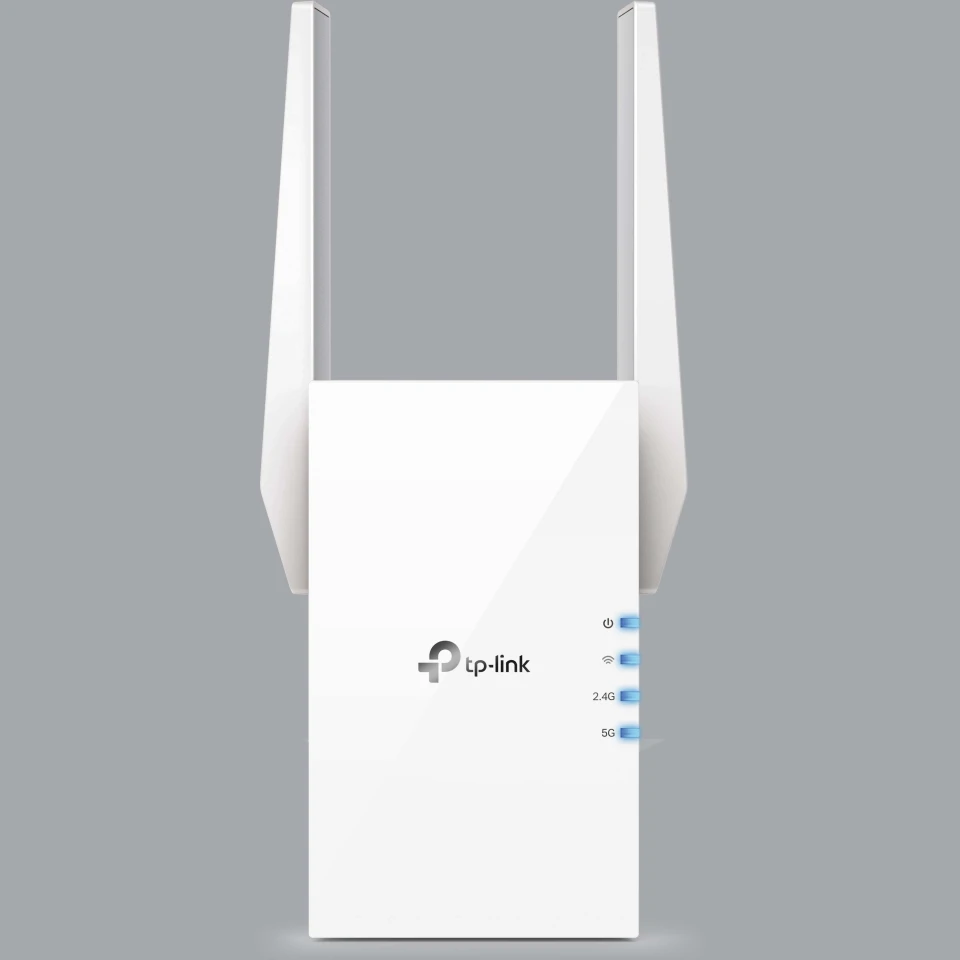
Linksys Max-Stream Wi-Fi 6 Range
The Linksys Max-Stream Wi-Fi 6 Range Extender enhances coverage with Wi-Fi 6, delivering faster speeds and better reliability. It works with any router, making setup easy. Perfect for large homes, it supports smooth streaming, gaming, and device connectivity. Its sleek white design blends seamlessly into any room.
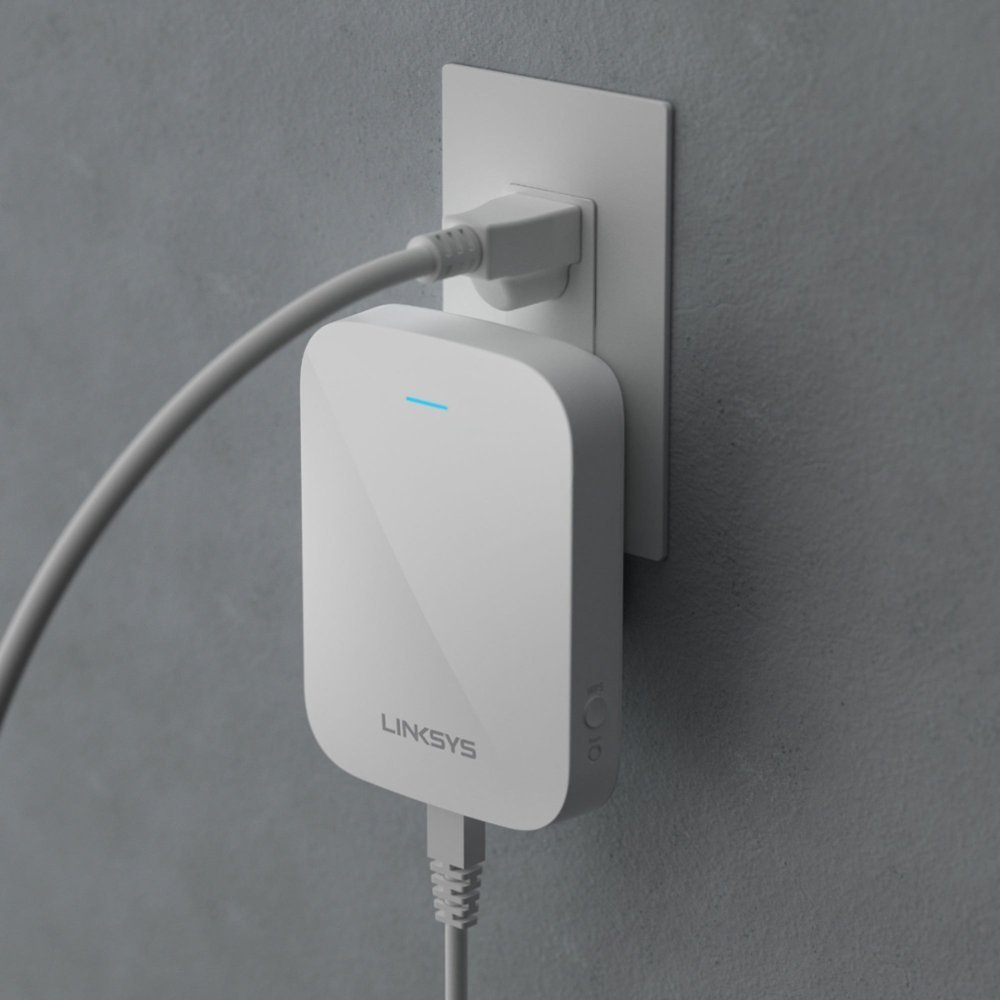
TP-Link AC750 WiFi Range Extender
The TP-Link AC750 WiFi Range Extender boosts coverage up to 750 Mbps, eliminating dead zones in your home. It’s easy to set up, works with any router, and includes a signal light for optimal placement. The compact, plug-in design blends seamlessly into any room.
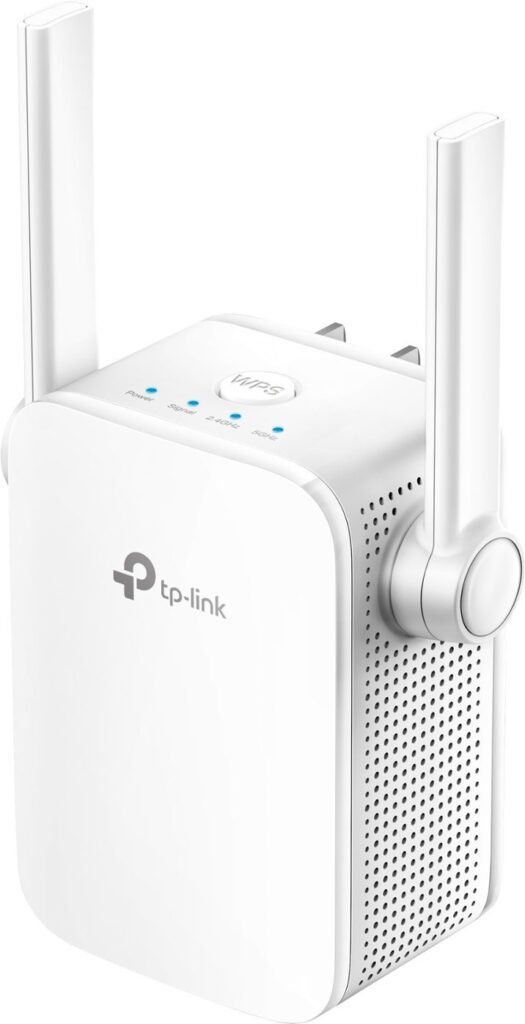
NETGEAR Wi-Fi Range Extender EX6120
The NETGEAR EX6120 boosts Wi-Fi with dual-band speeds up to 1200 Mbps, effectively eliminating dead zones and improving connectivity. Additionally, it is compatible with any Wi-Fi router, and its compact, wall-plug design makes installation easy. Furthermore, with FastLane technology, it delivers reliable performance for HD streaming and online gaming.
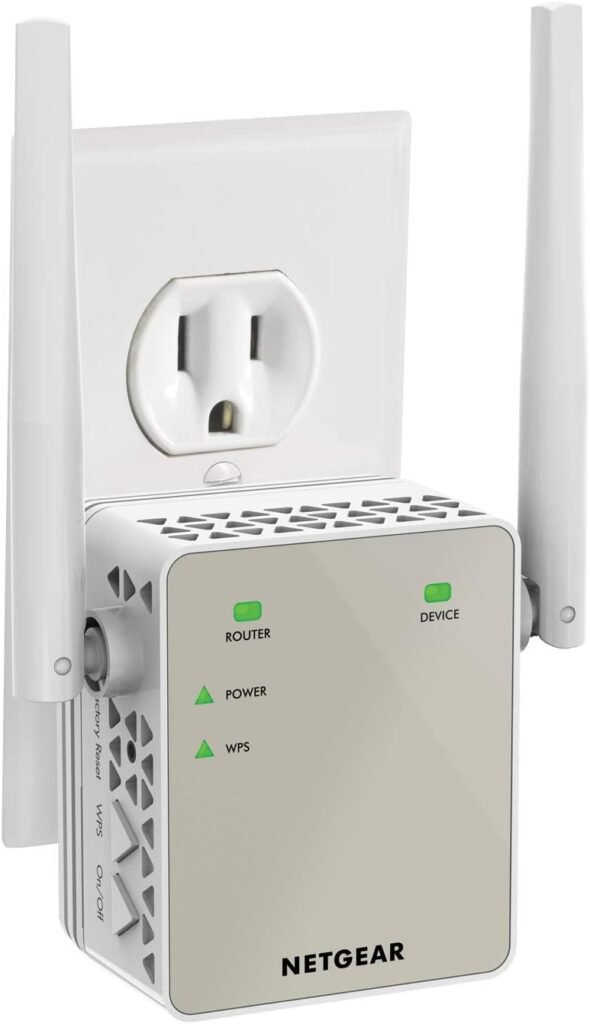
ASUS RP-AX58 Wi-Fi 6 Range Extender
The ASUS RP-AX58 AX3000 Wi-Fi 6 Extender delivers speeds up to 3000 Mbps, effectively eliminating dead zones and supporting multiple devices. Additionally, it’s easy to set up, works with any router, and features a compact design that plugs directly into a wall outlet. Consequently, with Wi-Fi 6 technology, it ensures smoother streaming, gaming, and browsing throughout your home.
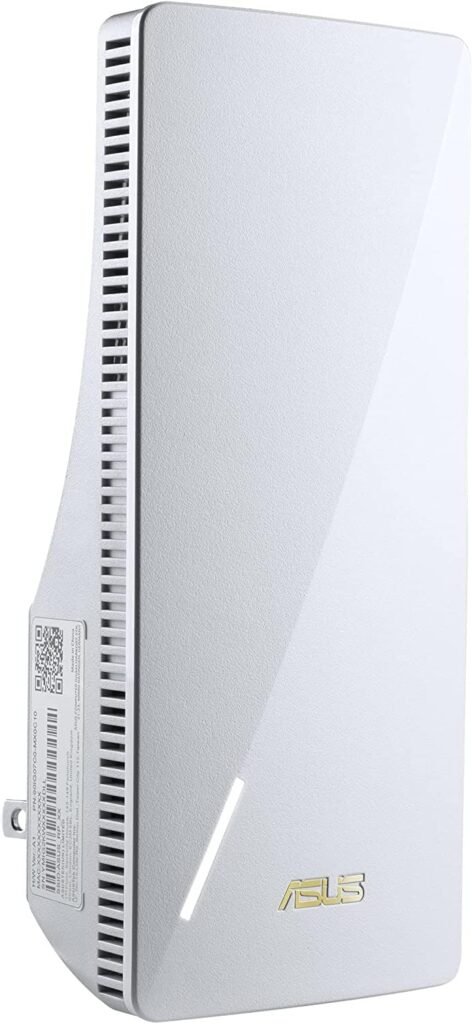
Understanding the need for a WiFi extender
In today’s digital age, a strong and reliable internet connection has become a necessity for many households. From streaming and working from home to video conferencing, our need for a stable WiFi network has never been greater. However, the reality is that not all homes are created equal when it comes to wireless coverage.
Dead zones in WiFi, where the signal is weak or missing, can stem from factors such as home size, construction materials, or router placement. Consequently, these zones can block internet access or cause connection drops, leading to frustration.
A WiFi extender boosts and extends your network’s range. Placing it between your router and weak signal areas can eliminate dead zones and ensure a strong, consistent connection.
How does a WiFi extender work?
A WiFi extender is a straightforward device that bridges the gap between your router and weak signal areas. It receives the router’s signal, amplifies it, and then rebroadcasts the stronger signal to areas with poor connectivity.
The process is simple. The extender connects to your router via wire or wirelessly. It then amplifies and retransmits the signal, extending your network’s reach and improving coverage throughout your home.
A WiFi extender integrates seamlessly with your current router and network. Moreover, it is a cost-effective, easy-to-install solution that enhances and expands coverage. Consequently, you won’t need a new router or mesh system.
Benefits of using a WiFi extender
Improved Wireless Coverage: A WiFi extender eliminates dead zones and boosts coverage. Placing it in weak signal areas ensures strong, reliable internet throughout your home.
Enhanced Connectivity: A WiFi extender provides a stable connection in weak signal areas, improving reliability for video calls, gaming, and streaming.
Increased Productivity: Weak WiFi signals can disrupt work, especially for those working from home. A WiFi extender ensures a strong, reliable connection, boosting efficiency and minimizing interruptions.
Cost-Effective Solution: A WiFi extender is an affordable alternative to upgrading your entire network or buying a mesh system. It significantly improves coverage without costing much, making it a budget-friendly choice for better internet.
Ease of Installation: Installing a WiFi extender is usually simple and user-friendly. Most come with easy guides and setup wizards, making network extension hassle-free.
Factors to consider when choosing a WiFi extender
Compatibility with Your Router: Choose a WiFi extender compatible with your router’s make and model for a smooth, reliable connection.
Wireless Standard and Speed: Choose a WiFi extender that supports the latest standards, like 802.11ac or WiFi 6 (802.11ax), for faster speeds and better range.
Dual-Band or Tri-Band: WiFi extenders come in dual-band (2.4GHz and 5GHz) or tri-band (adding another 5GHz band). Tri-band models offer greater bandwidth and performance, so choose based on your home’s needs and devices.
Range and Coverage: Consider the coverage area of a WiFi extender to ensure it can eliminate dead zones. Choose one with a wide coverage area, measured in square feet or meters, to reach all needed spots.
Ethernet Ports: Some WiFi extenders have Ethernet ports for connecting wired devices like gaming consoles and smart TVs. This offers a stable connection and reduces wireless network traffic.
Ease of Use: Choose a WiFi extender with user-friendly setup and configuration. Look for models with intuitive mobile apps or web interfaces for easy connection, setting adjustments, and performance monitoring.
Setting up your WiFi extender
Setting up a WiFi extender involves a few simple steps. First, identify the optimal location, which is typically midway between your router and areas with weak signal. This placement ensures that the extender can effectively bridge the gap and extend your network’s reach. Furthermore, this positioning helps improve overall coverage and connectivity.
After finding the ideal placement, start the setup. Most extenders include clear instructions, a setup wizard, or a mobile app. Connect the extender to power, then either link it to your router with an Ethernet cable or sync it wirelessly.
After the physical setup is complete, you’ll need to configure the extender’s settings to ensure optimal performance. This may include choosing the appropriate wireless frequency (2.4GHz or 5GHz), adjusting the extender’s name (SSID) and password, and potentially enabling advanced features like beamforming or MU-MIMO. Many extenders also offer the ability to create a separate SSID for the extended network, allowing you to easily identify and connect to the boosted signal.
It’s important to note that the specific setup process may vary depending on the brand and model of your WiFi extender. However, most manufacturers provide clear and detailed instructions, both in the product documentation and through online resources, to ensure a seamless and straightforward installation experience.
Tips for optimizing your WiFi extender performance
Placement is Key: For optimal performance, place the WiFi extender midway between your router and areas with poor signal. This positioning helps bridge the gap and provide consistent coverage. Avoid placing it too close to the router or near obstacles like walls or large furniture, as these can interfere with the signal.
Optimize Wireless Channels: WiFi networks use specific channels, and interference from nearby networks or devices can affect your extender’s performance. Use a WiFi analyzer app to find the least congested channels in your area, and then configure your extender to use those channels for optimal performance.
Enable Wireless Encryption: Securing your wireless network is essential. Configure your WiFi extender to use the latest encryption standards, such as WPA2 or WPA3. This not only protects your network from unauthorized access but also ensures the integrity of your connection.
Update Firmware Regularly: Manufacturers often release firmware updates for their WiFi extenders to address bugs, improve performance, and add new features. Make sure to regularly check for and install these updates, as they can significantly enhance the overall functionality and reliability of your extender.
Adjust Extender Settings: Depending on your needs and home layout, you may need to tweak your WiFi extender’s settings for optimal performance. For instance, you might adjust the wireless mode, modify the transmit power, or enable features like band steering or beamforming. Therefore, consult the user manual or the manufacturer’s website for detailed guidance on optimizing these settings.
Monitor and Troubleshoot: Keep an eye on the performance of your WiFi extender by regularly checking its status and monitoring the signal strength in the areas it’s intended to cover. If you notice any issues, such as slow speeds or intermittent connectivity, refer to the troubleshooting guide provided by the manufacturer or seek out online resources for potential solutions.
Troubleshooting common WiFi extender issues
Weak or Inconsistent Signal: If you’re experiencing weak or inconsistent signal from your WiFi extender, investigate a few potential causes. First, ensure the extender is placed midway between your router and areas with poor coverage. Obstacles like walls, floors, or large furniture can interfere with the signal, so try relocating the extender to a more open area. Additionally, check for interference from other wireless devices or neighboring networks and adjust the extender’s wireless channel if needed.
Connectivity Issues: If devices struggle to connect to the extended network, first verify that the extender is properly synced with your router. Check that the extender’s SSID and password match your primary network. Additionally, try resetting the extender and redoing the setup process to ensure a proper connection.
Slow Speeds: If your WiFi extender is slow, check the wireless standard and bandwidth to ensure compatibility with your router and devices. Adjust settings like wireless mode or transmit power to optimize performance. Also, ensure the extender is not too far from the router or in an area with heavy interference.
Overheating: WiFi extenders can overheat if placed in cramped or poorly ventilated areas, leading to performance issues or shutdowns. To prevent this, place the extender in a well-ventilated area, away from direct sunlight and heat sources. Consider using a cooling pad or stand to improve airflow if needed.
Firmware Issues: Firmware problems can cause connectivity issues, slow speeds, or device failure. Check the manufacturer’s website for firmware updates and follow the instructions to update your extender’s software. This can often resolve issues and enhance performance.
If you continue to have issues with your WiFi extender, consult the manufacturer’s troubleshooting guides or contact their customer support. They can offer specific guidance based on your device and the problems you’re encountering.
Comparing WiFi extenders vs. mesh WiFi systems
While WiFi extenders and mesh WiFi systems both aim to improve wireless coverage in your home, they differ in their approach and the overall experience they provide.
WiFi Extenders:
- Extend the reach of your existing router by amplifying and rebroadcasting the wireless signal
- Typically more affordable and easier to set up compared to mesh systems
- Require manual configuration and placement to optimize performance
- May create separate network SSIDs, leading to potential connectivity issues when transitioning between the primary and extended networks
Mesh WiFi Systems:
- Consist of multiple interconnected nodes that work together to create a seamless, whole-home wireless network
- Automatically route traffic to the optimal node, providing a more seamless and consistent user experience
- Generally offer more advanced features, such as band steering, smart home integration, and comprehensive network management
- Tend to be more expensive upfront but can provide better overall performance and coverage
- Easier to set up and maintain compared to a traditional router and extender setup
The choice between a WiFi extender and a mesh WiFi system ultimately depends on your specific needs, the size and layout of your home, your budget, and your technical expertise. If you have a relatively small to medium-sized home and are looking for a simple and cost-effective solution, a WiFi extender may be the better option. However, if you have a larger home or require more advanced features and a truly seamless wireless experience, a mesh WiFi system may be the more suitable choice.
Conclusion and final thoughts
In today’s digital landscape, a strong and reliable WiFi connection has become essential for our daily lives. Whether you’re working from home, streaming your favorite shows, or simply browsing the internet, a stable internet connection is crucial. Unfortunately, many homeowners struggle with weak or inconsistent wireless coverage, leading to frustrating dead zones and connectivity issues.
Fortunately, the solution to this problem is a WiFi extender. By strategically placing the extender in your home, you can effectively eliminate dead zones, boost your internet signal, and enjoy seamless connectivity throughout your living space. Additionally, with a wide range of options from top brands like TP-Link, Netgear, and Linksys, finding the best WiFi extender for your home has never been easier.
By considering factors such as compatibility, wireless speed, coverage area, and ease of use, you can select the perfect WiFi extender to meet your specific needs. And with the right setup and optimization techniques, you can ensure that your extended wireless network delivers the performance and reliability you deserve.
So, if you’re tired of dealing with weak WiFi signals and dead zones, don’t settle for a subpar internet experience. Invest in a high-quality WiFi extender and unleash the full potential of your home’s wireless network. Boost your internet signal and enjoy seamless connectivity throughout your entire home – the best WiFi extender is just a few clicks away.